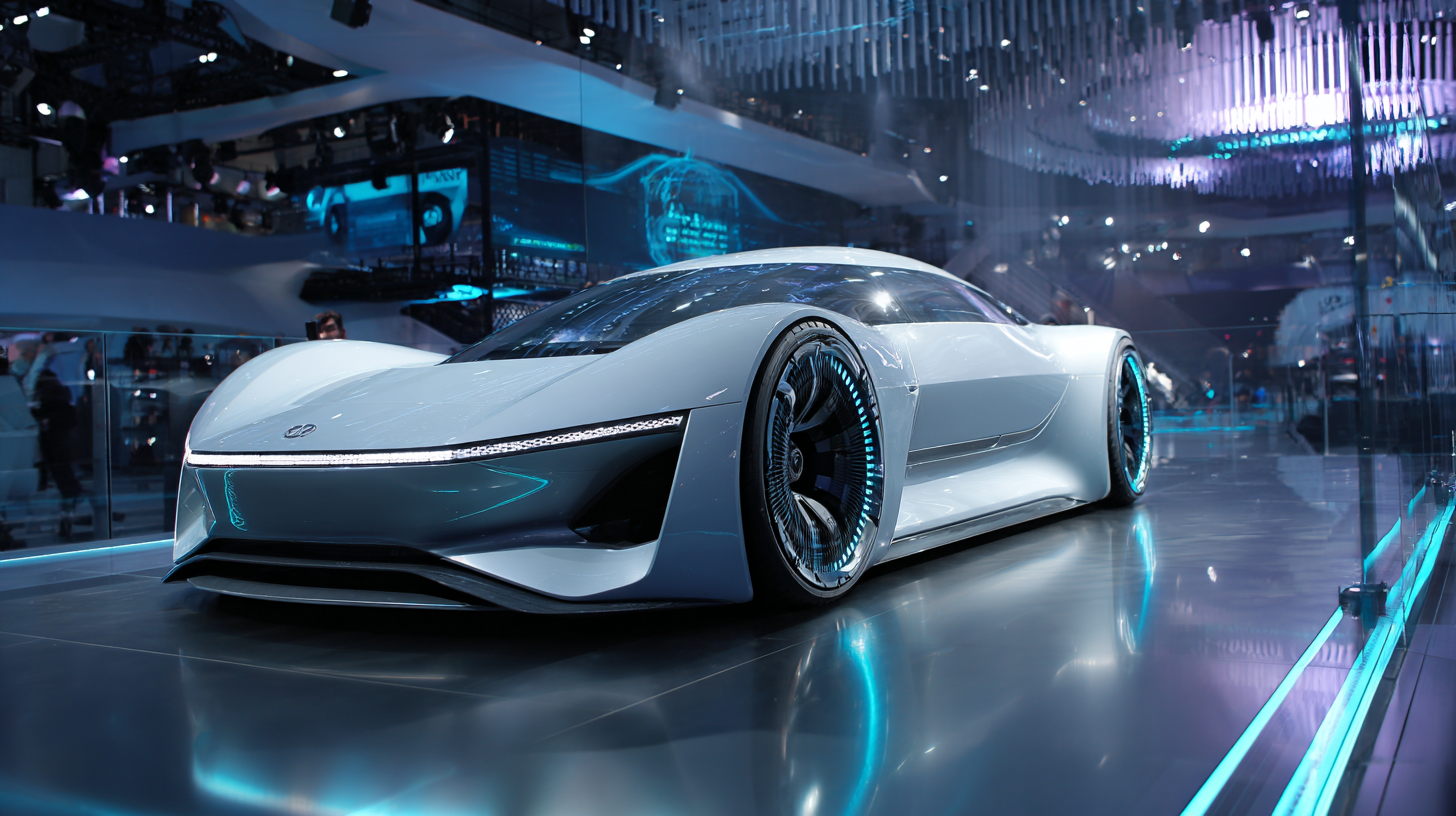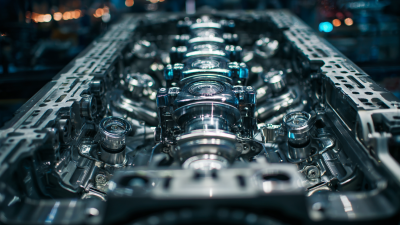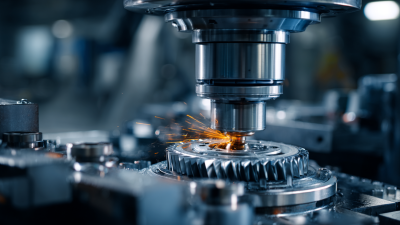Innovative Trends in Automotive Mechanical Engineering Shaping the Future of Vehicle Design
In today's rapidly evolving automotive landscape, the field of automotive mechanical engineering plays a crucial role in redefining how vehicles are designed and manufactured. Innovative trends in this domain are not only enhancing vehicle performance but also addressing critical issues such as sustainability, safety, and user experience. The integration of advanced materials, smart technologies, and innovative manufacturing processes is paving the way for the development of vehicles that are lighter, more efficient, and environmentally friendly. As automotive manufacturers strive to meet the growing demand for electrification and automation, the importance of automotive mechanical engineering becomes increasingly evident. This article will explore the transformative trends that are shaping the future of vehicle design, highlighting the necessity for engineers to adapt to these changes and embrace new methodologies. By examining current and emerging technologies, we can gain insight into the future trajectory of automotive design and engineering.

Innovative Materials Revolutionizing Lightweight Vehicle Design and Efficiency
The automotive industry is undergoing a radical transformation, particularly in the realm of lightweight vehicle design. The integration of innovative materials such as carbon fiber reinforced polymers and advanced aluminum alloys is revolutionizing how vehicles are built. These materials not only reduce weight but also enhance the overall efficiency and performance of vehicles, ultimately leading to improved fuel economy and lower emissions. As manufacturers strive to meet stringent environmental regulations, the shift towards lightweight design is proving essential.

Tips for automotive engineers: Consider incorporating hybrid materials that combine the benefits of high strength and low weight. This approach can help achieve the perfect balance between durability and efficiency. Additionally, staying updated with the latest research on sustainable materials can offer competitive advantages in an ever-evolving market.
Moreover, advancements in manufacturing technologies like 3D printing are allowing for greater design flexibility and customization. This enables engineers to experiment with complex geometries that were previously unattainable, further optimizing vehicle structures for weight reduction. As these innovative trends gain momentum, the future of automotive mechanical engineering looks promising, setting the stage for next-generation vehicles.
The Role of Advanced Simulation Techniques in Optimizing Automotive Performance
Advanced simulation techniques are revolutionizing automotive mechanical engineering by allowing engineers to anticipate and solve performance challenges before physical prototypes are created. Utilizing high-fidelity simulations, designers can analyze complex interactions across various vehicle components under real-world conditions. This not only speeds up the development process but also significantly reduces costs associated with material waste and the need for extensive physical testing. By integrating computational fluid dynamics (CFD) and finite element analysis (FEA), engineers can optimize aerodynamics and structural integrity, resulting in vehicles that are not only more efficient but also safer.
Moreover, these simulation tools facilitate a more iterative design process, where changes can be evaluated in real-time. This agility is crucial as automotive manufacturers increasingly shift towards electric and connected vehicles, which require unique design considerations and performance benchmarks. Simulations can help assess battery placement, weight distribution, and energy efficiency, ensuring that the final vehicle design meets stringent performance standards. Ultimately, the role of advanced simulation techniques is integral to shaping innovative vehicle designs that respond to the evolving demands of the automotive industry.
Integration of Electric and Autonomous Technologies in Future Vehicle Engineering
The integration of electric and autonomous technologies is revolutionizing the landscape of automotive mechanical engineering. As the demand for sustainable and efficient vehicles grows, manufacturers are increasingly turning to electric powertrains to reduce emissions and improve performance. This shift not only enhances energy efficiency but also presents new design challenges and opportunities. Engineers are now tasked with creating lightweight structures that can support these advanced technologies while maintaining safety and durability.
In parallel, the rise of autonomous driving systems is reshaping vehicle architecture and user experience. The incorporation of sophisticated sensors, artificial intelligence, and machine learning algorithms is enabling vehicles to navigate complex environments with minimal human intervention. This integration necessitates a rethinking of traditional mechanical systems, as new control strategies and redundancies are essential for ensuring safety and reliability. As we move towards an era of smart mobility, the collaboration between electric and autonomous technologies will redefine vehicle design, paving the way for smarter, more connected automobiles.
Sustainable Manufacturing Practices Driving Green Innovations in Automotive Design
 Sustainable manufacturing practices are becoming increasingly crucial in the automotive industry as manufacturers seek to reduce their environmental impact. By embracing eco-friendly materials and processes, companies are not only minimizing waste but also lowering their carbon footprint. Innovations such as biodegradable composites and recycled metals are revolutionizing the materials used in vehicle design, leading to more environmentally friendly cars that offer the same level of performance and safety as traditional models.
Sustainable manufacturing practices are becoming increasingly crucial in the automotive industry as manufacturers seek to reduce their environmental impact. By embracing eco-friendly materials and processes, companies are not only minimizing waste but also lowering their carbon footprint. Innovations such as biodegradable composites and recycled metals are revolutionizing the materials used in vehicle design, leading to more environmentally friendly cars that offer the same level of performance and safety as traditional models.
Furthermore, the integration of advanced technologies such as 3D printing and automation in manufacturing allows for greater precision and efficiency. These technologies enable automotive engineers to innovate rapidly while using fewer resources. The shift towards electric vehicles has also spurred the development of sustainable practices, as manufacturers strive to create greener battery technology and streamline production processes. As these trends continue to evolve, the automotive landscape is poised for a transformation that balances performance with sustainability, ultimately benefiting both consumers and the planet.
The Impact of IoT and Connected Vehicles on Mechanical Engineering Standards
The integration of IoT and connected vehicles is fundamentally transforming the landscape of automotive mechanical engineering. With the rise of over-the-air (OTA) updates, manufacturers can now significantly reduce the number of vehicle recalls, which have surged as cars become increasingly software-defined. This shift not only minimizes costs but also enhances consumer safety and satisfaction. Forecasts indicate that by 2025, the number of connected devices will reach over 20 billion, underlining the critical role of IoT in the automotive sector.
One of the most groundbreaking aspects of this transformation is the advent of the Artificial Intelligence of Things (AIoT), which combines AI capabilities with IoT infrastructure. This synergy facilitates predictive maintenance, allowing manufacturers to anticipate failures before they occur, thus optimizing operational efficiency. According to recent industry reports, manufacturers who implement AI-driven predictive maintenance experience a 20-30% reduction in equipment downtime.
Tip: Embrace the potential of IoT in vehicle design by investing in software development and sensor technology. This approach not only enhances vehicle performance but also aligns with the growing customer demand for connectivity and smart features. Moreover, staying updated on the latest AI trends can drive innovation and maintain a competitive edge in the ever-evolving automotive market.
Related Posts
-

China's Quality Evolution in Automotive Mechanical Engineering Driving Global Demand
-

Ultimate Guide to Mastering Automotive Mechanical Engineering for Future Innovators
-

The Future of Best Mechanical Manufacturing Innovations and Trends
-

The Ultimate Guide to Discovering the Best Engineering Solutions for Your Business Needs
-

What is the Impact of Mechanical and Electrical Engineering on Modern Industries
-

Exploring Innovative Alternatives in Machine Engineering for Enhanced Efficiency and Productivity
